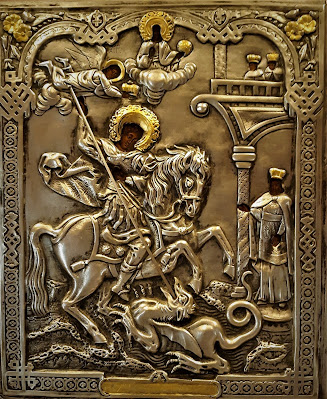The teaching of the Church reaches back into the Old Testament, when we read in the Book of Genesis that God created man, and put him in the Garden of Eden to tend to it. From that time, God, who is the creator and ruler of the universe, has called men and women in every age to develop and use their talents for the good of others, and as a way of sharing in the creative work of God. In every kind of labour we are to remember that we are obeying the command of God to use our talents, and to receive the fruit of our labours. Our work allows us to provide for our own needs, and for the needs of those for whom we are responsible. It also allows us to show proper charity towards those who are in need.
The Church asks us to look to St. Joseph on this day, and follow his example of work, by which he showed his love and responsibility for the Blessed Virgin Mary and for the Child Jesus. St. Joseph shows the dignity of work – and whether it is manual work, or any other kind of work, we are to do it in a spirit of cooperation with God, and as an offering to Him. Any task, well done, is an offering to God. When we work, we should see it as a work done for God, and it is part of what shows that we are created in His image. In creation itself, God worked for six days, and rested the seventh. So in our own lives, we are to keep that balance between using our energy for work, and then out of respect for our minds and bodies, give a day for our spiritual and physical renewal.
_______________________________________
Holy Joseph, Intercessor
Unto thee God’s children sing;
Be our Patron and Protector,
To God’s throne our praises bring.
Faithful Spouse of faithful Virgin,
Lover of God’s purity;
From thy worthy place in heaven,
Pray that we may faithful be.
Guardian of the Word Incarnate,
Silent guide of God’s own Son;
Guard our hearts and lead us onward
To the life that Christ has won.
Humble man in lofty station,
God has poured His grace on thee;
Pray such grace to us be given,
That we live eternally.
Text: Fr. Christopher G. Phillips, 1991
Music: "Stuttgart" adapted by C. F. Witt, 1715
Music: "Stuttgart" adapted by C. F. Witt, 1715
O God, the Creator of all things, who hast appointed for mankind the law of labour: graciously grant that through the example and patronage of Saint Joseph we may accomplish the work that thou hast commanded, and attain unto the rewards that thou dost promise; through Jesus Christ thy Son our Lord, who liveth and reigneth with thee, in the unity of the Holy Spirit, ever one God, world without end. Amen.
_______________________________________
Pictured: "Our Saviour Subject To His Parents At Nazareth"
by John Rogers Herbert 1810–1890



.jpg)

















